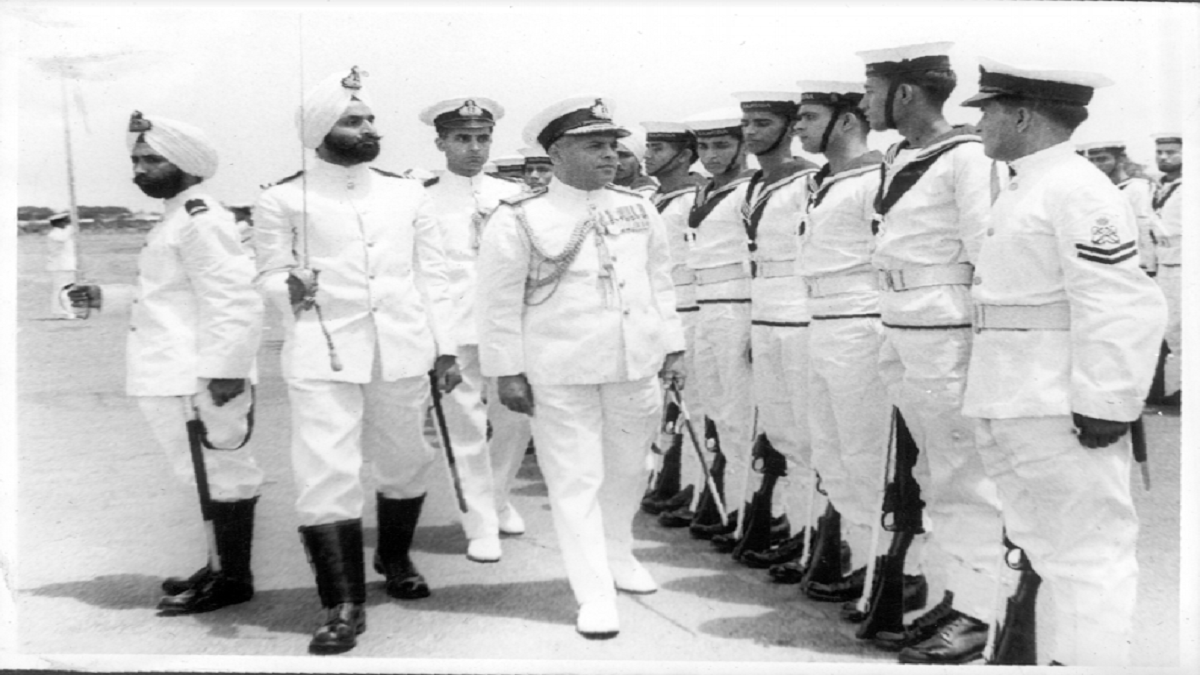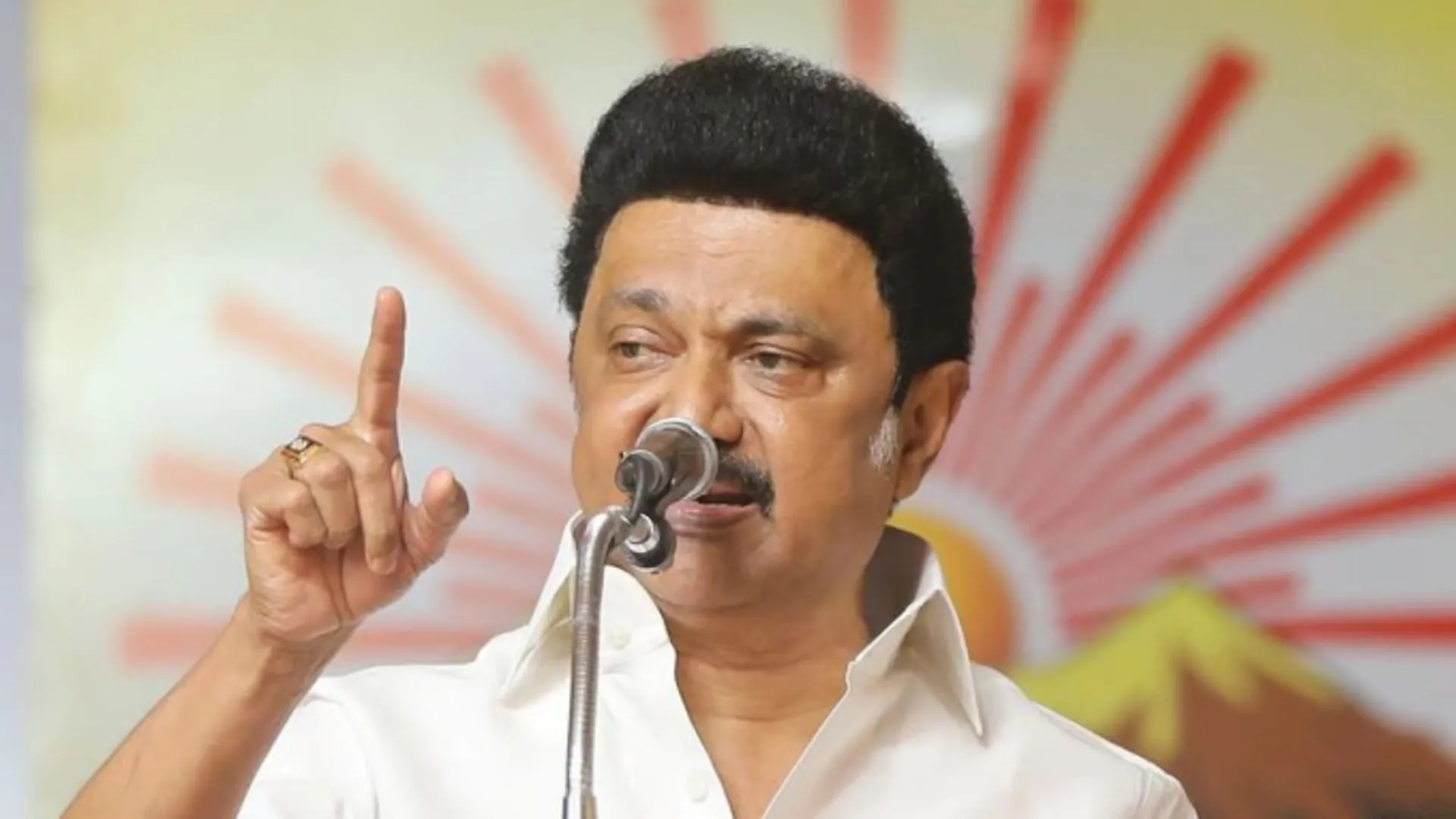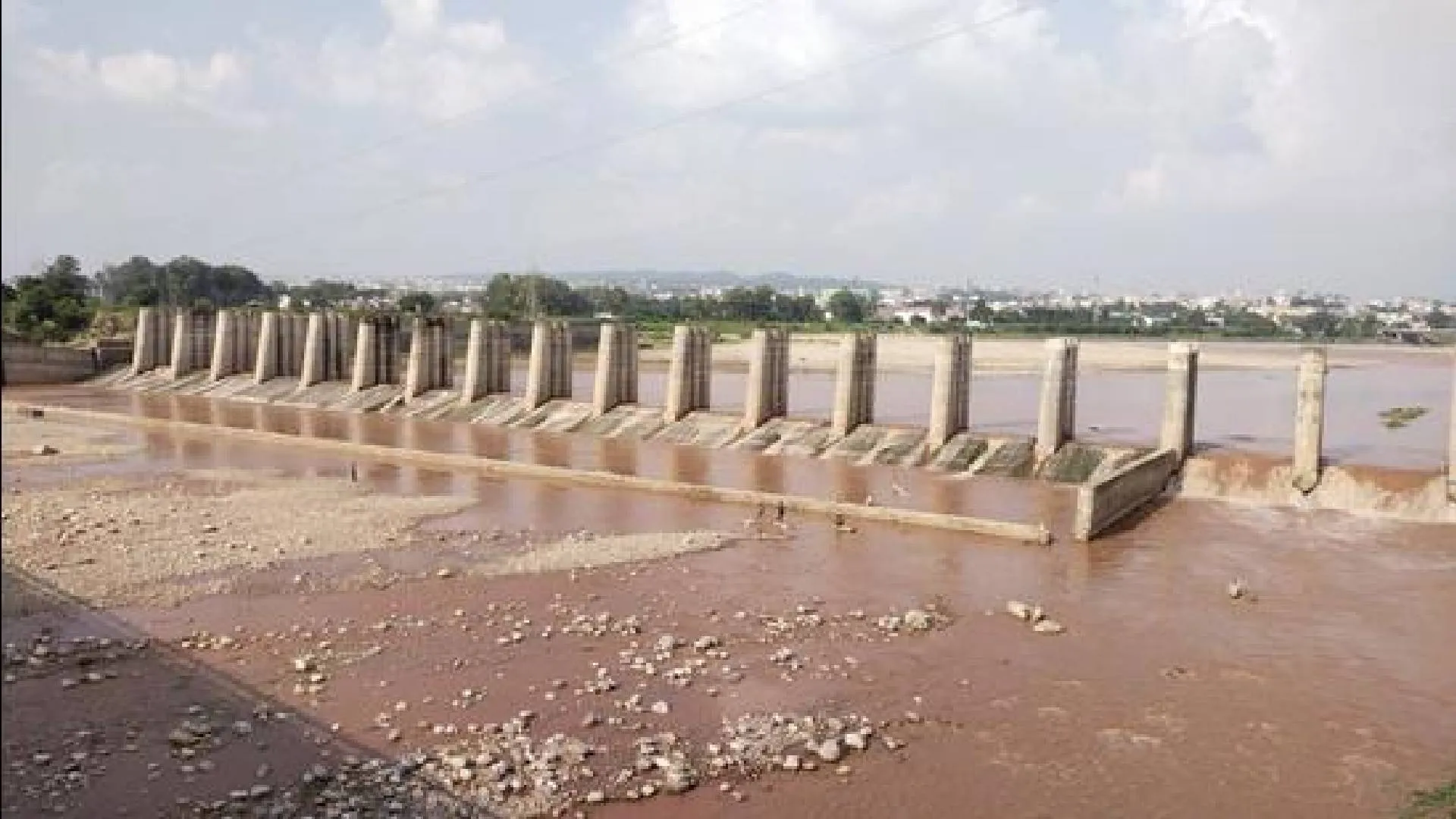“Son, I may have long left the sea… But the sea has never left me.” That’s exactly what crosses our mind as we go down the memory lane remembering Admiral Adhar Kumar Chatterji, the revered icon of Indian Navy. India’s greatest son, Admiral Chatterji may have departed from this world on 6 August 2001, but Indian Navy continues to bear his imprint even today. He may have bid goodbye to the world and with that to the marine defence but the naval force never left him. The direction he had given as a stalwart of naval forces continues to be followed even today in Indian Navy. Epitome of multifaceted talents and vision, Chatterji continues to be remembered as a guiding force of Indian Navy even today.
In true traditions of the silent service that is the Navy, Chatterji has remained largely unknown outside the domain of the white uniformed fraternity. The Independence Day celebrations today give us an ideal occasion to remember people like him who made trail blazing contributions to the navy and the nation but have not been sufficiently recognised.

A.K. Chatterji (or AKC as he was often referred to) was the third Indian Chief of Naval Staff (CNS) assuming office in the rank of Vice Admiral on 4 March 1966. Halfway through his tenure the Government took the decision to make the appointment of CNS tenable by a full 4-star Admiral and bring him on par with the other two services. Consequently, on 01 Mar 68, AKC became the first CNS in the rank of Admiral. Many newspapers then reported the event with the humorous headline: “The Admiral Sheds his Vice”, which, many years later, also became the title of an anecdotal biography of AKC.
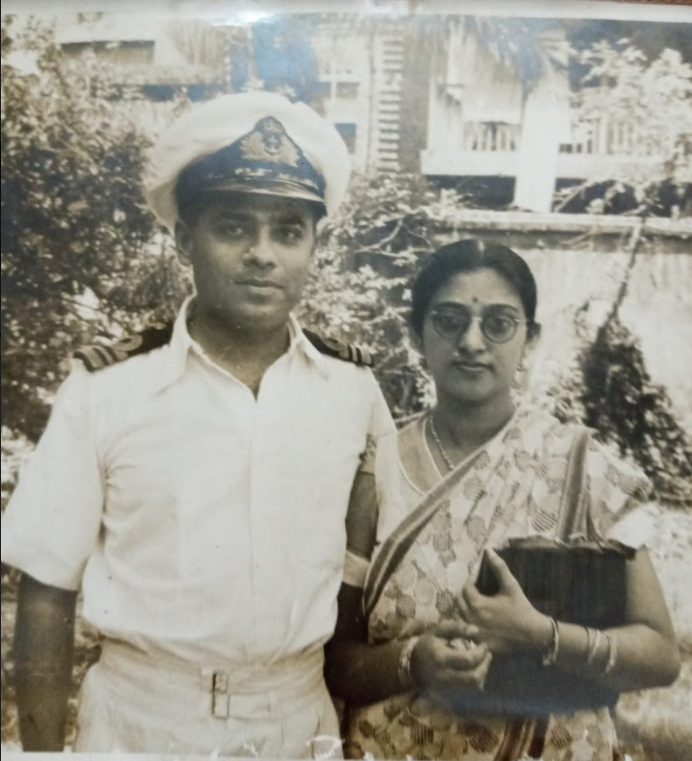
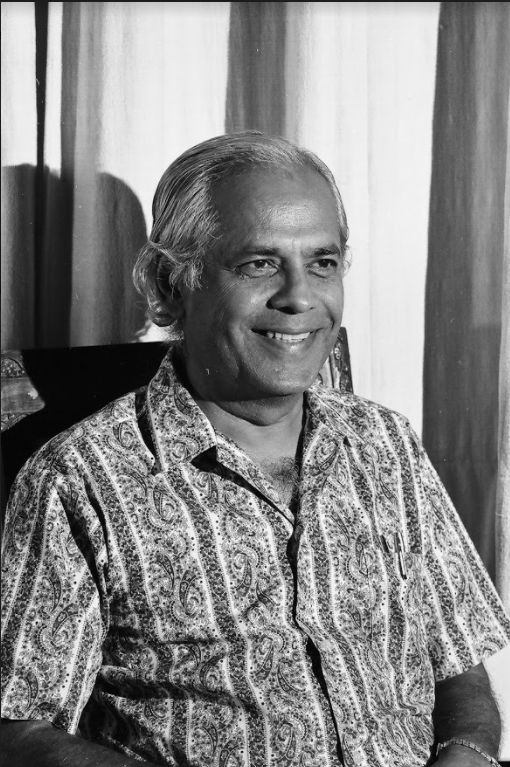
What the papers did not report then and what needs to be underscored is that the Admiral who shed his Vice also built the Indian Navy and can be considered to be the architect of its growth and development. While making due allowance for the fact that all such growth stories are about continuity, team work and multifaceted contributions of many, some people stand out for their vision, pioneering initiatives and ability to think far ahead of their times. AKC was one such.
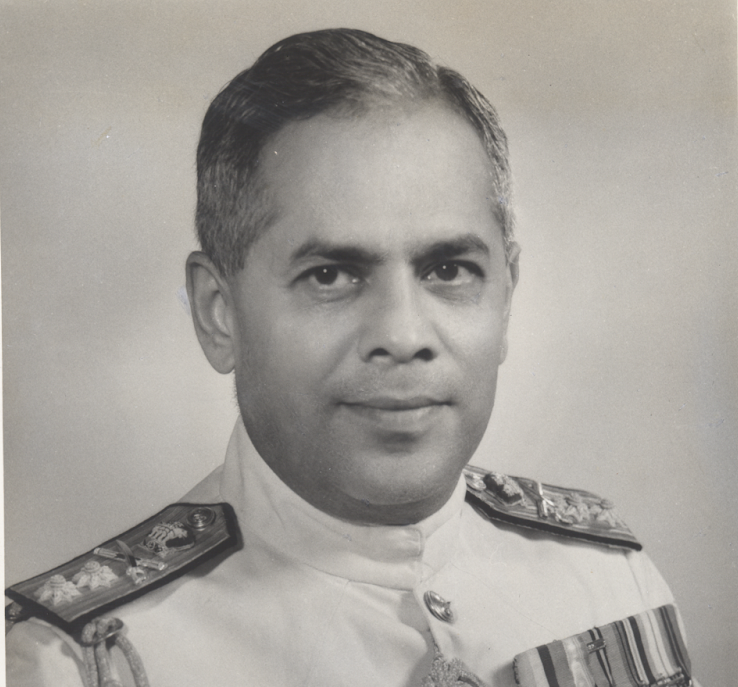
Thus, the promotion to Admiral was not matter of mere pomp or protocol. 01 Mar 68 was the day of restructuring of Indian Navy. It was the day when the Western Naval Command, the Eastern Naval Command and the Western Fleet were formed and plans made for the formation of the Eastern Fleet, which took shape couple of years later. These developments underlined that the fledgling Indian Navy, the smallest among the three services, had grown its wings and was now ready to take off. The year 1968 marks that point when the Navy turned a decisive corner and propelled itself into a higher orbit. And, in many ways, AKC was the man responsible for this transformation.
Today, the Indian Navy is an internationally highly regarded professional force with three dimensional capabilities. The 140 ship Navy of today with aircraft carrier and nuclear submarines in its arsenal is a far cry from the Navy of 1947 that consisted of less than half a dozen sloops. The narrative of its growth has also seen other success stories, such as its achievements in indigenisation wherein it pioneered making in India or its impressive world class niche capabilities in fields such as hydrography, underwater medicine, diving and ocean sailing to name a few. More importantly, as matters maritime become increasingly important in International affairs and India becomes an important player in the Indo-Pacific as well as a preferred security partner in the Indian Ocean Region (IOR), the Navy is set to become a significant asset in our foreign policy and international cooperation matrix.
In some ways, much of this spectacular success owes to the seeds that were sown in 1968. At the dawn of independence in 1947-48, the Indian Navy had authored a Plan Paper that was audacious in scope and which envisaged a two Fleet Navy with two aircraft carriers, two light Cruisers, eight submarines and several blue water surface ships. The Government approved the planned force levels without any financial commitments. Given the situation over next two decades on our land frontiers and other development imperatives of a newly independent nation, the Navy faced huge budgetary and other constraints. The sea remained a distant horizon for our political apex and the Navy grew at a snail’s pace, despite the best efforts of its top leadership.
In March 1966, Vice Admiral A.K. Chatterji took over the reins of the Navy. The strategic situation then was fraught with uncertainty. Britain had indicated its desire to withdraw west of Suez, the cold war was in full swing and USA and USSR were competing to extend their influence in IOR. Indian politics was entering an era of uncertainty after the long tenure of Jawaharlal Nehru and the sudden demise of his successor Lal Bahadur Shastri. Within the Indian Navy there was considerable disquiet about not being given an opportunity for action in the 1965 war with Pakistan. During the war, the lack of a submarine in Indian Navy’s inventory was acutely felt and this became a top national priority immediately after.
A year later, in Oct 1967, an Israeli Navy destroyer Eilat was sunk, off Port Said, by missile attacks, from small Egyptian missile boats. This was to change surface warfare forever with surface to surface missiles launched from ships as a new potent weapon. Indian Navy and AKC were closely following all these developments as they chalked out Navy’s development plans.
It is one of those great coincidences of history that Chatterji as a Commander had been the lead author of the aforementioned Plans paper of 1948 as the first Director of Naval Plans and Intelligence at the relatively young age of 32. Now he was in a position to be the principal architect and bring the grand design to fruition. He did so in splendid fashion. In November 1967, the Navy’s fleet tanker INS Deepak was commissioned giving the Fleet much needed mobility. Admiral SM Nanda, who was Flag Officer Commanding Indian Fleet (FOCIF) at that time and who succeeded AKC as Navy Chief says in his book The Man who bombed Karachi, that with this development: “Ships got proficient in the process of underway replenishment at sea and were enabled to stay out for prolonged periods. The helicopter on board came in handy to deliver mail and essential stores at sea and often pitched in to evacuate patients whenever the aircraft carrier was not in company”. Thus, Fleet Operations started taking a new hue.
In December 1967, India entered the submarine age with the commissioning of INS Kalvari in the erstwhile Soviet Union. Kalvari reached Visakhapatnam in July 1968 and the submarine arm was formed. The Navy had now become truly three dimensional. October 1968 witnessed another momentous event — the launch of INS Nilgiri, the nation’s first indigenous major warship. The keel of the second ship in this class, INS Himgiri was laid a month later in Nov 1968. In quick succession in Dec 1968, the Navy commissioned the submarine depot ship INS Amba, two anti-submarine frigates — the Petyas, and the second submarine INS Khanderi. The Petyas (three more joined before 1971) were to form the fulcrum of Eastern Fleet in later years. The submarine and surface ship acquisition also saw the Navy turn away from its traditional supplier United Kingdom to the Soviet Union; it was a course alternation that would result in other acquisitions, new doctrines, Standard Operating Procedures (SOPs) and, verily, a new culture.
The decision to buy OSA class missile boats around the same time from the Soviet Union was amongst the most significant. Fondly named AK boats (after the initials of the CNS A.K. Chatterji) by the service, they were to prove decisive in the 1971 war in setting ‘Karachi ablaze’ and forcing a quick resolution of the conflict. The Navy day is celebrated every year on 4 December to commemorate that attack and, in the process, raise a silent toast to AKC for the foresight shown in acquiring these small but formidable ships.
In 1967, after lot of discussion and tarrying, the government approved the ten year defence plan 1966- 77 which gave the Navy its impetus for expansion and modernisation. In the words of Adm Nanda the emphasis was on ‘self-reliance, selfsufficiency and indigenisation”. It needs emphasis that since its earliest days the Indian Navy was a ‘pioneer of ‘Making in India’ and ‘Aatmanirbhar Bharat’ contributing not merely to its own growth but also to national technology ecosystem.
The decision to acquire a submarine rescue vessel and Sea King anti-submarine helicopters were also made in 1968, the latter fetching up just before the 1971 war. That year also saw two new maritime reconnaissance Alize aircraft with modern sonobuoys added to the Navy’s inventory. A little later, in March 1969, the Navy’s Alouette helicopter squadron was commissioned. The maritime soul of the nation, long dormant, was slowly being stirred into consciousness.
The other momentous events and initiatives in 1968 or thereabouts, included the launch of the Naval Dockyard in Visakhapatnam which in turn made it possible for Navy to establish the Eastern Fleet there three years later just before the onset of the 1971 war and thereby realise our long held dream of a two-fleet Navy; the setting up of Naval Academy, then in temporary barracks in Kochi and which today is the pride of our nation at Ezhimala in North Kerala, the setting up of Boys Training Establishment for streamlining the training of Sailors, the expansion of Naval design organisation which today boasts of outstanding indigenous ship designs, streamlining the officer cadre with rational promotion policies and unique personal numbers to all, the creation of the rank of Master Chief Petty Officer to retain sailors with expertise and introduction of trousers in white uniform which is the standard outfit today.
It may thus be seen from the above that the restructuring of the Navy on 1 March 1968, were not mere cosmetic changes but formed the template that lasts till today and has provided the Indian Navy with the framework to transform itself into a world class force. The visionary changes of more than fifty years ago bear the imprint of Admiral Chatterji and continue to serve the navy well even today.
But what about the man himself? Surely, we ought to know more about someone who transformed the Service. AKC was born on 22 Nov 1914 in Dhaka (now in Bangladesh). Known to be very bright in studies he topped the Federal Public Service (FPSC, predecessor of UPSC) examination in 1933 for selection to the Royal Indian Marine (later Royal Indian Navy and, on 26 Jan 50, the Indian Navy). He was commissioned on 01 Sep 1935 and after four years of afloat training selected to specialise in Anti-Submarine Warfare (ASW). As the preface to his autobiography brings out “the British officers greatly appreciated the sharp intellect, grasp of naval warfare and leadership qualities in this young officer. On completion of the course in Aug 1940 his outstanding performance was recognised when he was immediately appointed as instructor in HMS Osprey, the ASW school of UK. It was indeed a rare honour for an Indian officer in pre-independence era”. An interesting piece of trivia is that one of his ‘students’ for a week long ASW orientation course was then Capt Lord Louis Mountbatten.
His ASW expertise was brought to bear upon in his subsequent appointments on the sloop HMIS Sutlej which undertook Atlantic and other convoys in dense submarine environment giving him experience of the War, as the first Officer in Charge of India’s ASW school established at Castle Barracks (today’s INS Angre) in Mumbai and as the Staff Officer responsible for fitting ASW equipment on ships. In 1944-45 he assumed Command of Fleet minesweeper HMIS Kathiawar and participated in the Burma campaign. His technical bent of mind made him a good choice to head another institution, the Navy’s Radar School HMIS Chamak in Karachi before he was deputed to UK for his Staff Course in Jan 1947.
On his return to India he was appointed as the Director of Naval Plans as hitherto mentioned. Here his colleagues were Lt YN Singh (regarded as the pioneer aviator of Indian Navy) and Lt Cdr N Krishnan who rose to the rank of Vice Admiral and distinguished himself as Navy’s great combat leader. In his autobiography ‘A Sailor’s Story’, Krishnan regarded as one of Navy’s bright sparks, talks of the esteem and affection for AKC and says “Adhar was an extrovert, supremely confident of himself. He had good reason to be so, because he had a brilliant brain backed by phenomenal memory. He could read pages from the seamanship manual and repeat them from memory that was word perfect”.
AKC’s brilliance is, in fact, a constant theme among officers of that generation. Admiral JG Nadkarni considered one of Navy’s most erudite officers said of him “he was undoubtedly one of the finest officers of the Indian Navy. He was certainly the most intelligent”. Talking of his plan paper Nadkarni says “the plan not only became a foundation on which all other plans were based but became a model of how these papers should be prepared. The plan has never been bettered”.
After this stint, AKC was appointed to the cruiser INS Delhi as her Executive Officer (Commander) and soon thereafter took over as the Commanding officer, becoming in the process the first Indian to take over as the Captain of a Capital Ship. From there he did a two year stint as our Naval Adviser in London (a first again) before returning to command the INS Delhi for a second time. Apart from his professionalism and intelligence another aspect of his came to fore on INS Delhi – his reputation as a ship handler par excellence. To again quote Nadkarni, “we used to watch with mouths agape his easy handling of the Cruiser”. A stern board entry (going in reverse) in Malta harbour with AKC giving engine orders looking at his stopwatch was talked about in the Navy for many years for the élan and precision. AKC himself recollected that “my two spells on board the Delhi were perhaps the most enjoyable and most instructive phases of my naval career”.
His subsequent tours of duty in the intervening years between 1953 and 1966 as Combay (Commodore in Charge, Bombay), participant at the Imperial College of Defence Studies (now RCDS), Deputy Chief of Naval Staff (DCNS), Flag Officer Commanding Indian Fleet (FOCIF) and Commandant, National Defence College (NDC), further burnished his image of a tech savvy, highly professional, far sighted person who was also an extremely warm and affectionate human being. As Krishnan recollects ‘working with him was always an exhilarating experience’. Respected strategic thinker, Vice Admiral PS Das, who was the Flag Lt to AKC when the latter was FOCIF recollects “His memory was razor sharp and his knowledge of tactical publications unmatched. He was a Staff Officer’s nightmare one moment but a caring person the next”. Cmde KK Sanjana, CO Mysore when AKC was Fleet Cdr adds “AKC was undoubtedly one of our most distinguished officers of the time and had a reputation of being a highly professional Admiral”.
Thus, when he became the Chief there were huge expectations from him. It was not easy translating his ideas for the Navy in a system plagued by several constraints – continental mindset, distractions on land borders, ill-informed criticism of the Navy’s defensive role in 1965 war, reduced budget and competing demands on the polity. Rahul Roy-Chaudhury, one of India’s leading strategic analysts brings out the problems in his introduction to AKC’s biography “On the role of Naval forces in the changing strategic environment, the Indian Navy and Government held opposing views”. Chatterji thus had the onerous burden of advocating the Navy’s view, persuade them to implement Navy’s expansion plan and restore the fighting spirit of the force.
On some occasions AKC did court controversy but with the good of service and nation at heart. In the very first year of his tenure as CNS he wrote a forceful article in ‘The Hindu’ newspaper (‘India and Seapower’, 11 Dec 66) arguing that the vacuum of maritime power by withdrawal of Britain west of Suez had implications for India’s maritime security and advocated expansion of Indian Navy to act as a moderating force in the vast (Indian ocean) region. A little over a year later, on 04 Mar 68, he claimed that “Indian Navy would assume complete charge of Indian Ocean in the wake of Britain’s military withdrawal from the area”.
The government of the day disagreed with AKC and his assessment, rejected the notion of a power vacuum, dismissed the need for a two Fleet navy and remained unsympathetic to his point of view. But, as has been pointed out by many, his advocacy needed to be seen in the context of his being a strategist of repute and proponent of naval expansion, as rhetoric ‘to goad the government into some sort of action rather than as intent of policy’. Furthermore, as Admiral Vishnu Bhagwat brings out ‘the straightforward AKC implied that ‘the vacuum would have to be filled albeit steadily’ and he was misunderstood. Another eminent academic Prof GVC Naidu too terms the statement as ‘considerable exaggeration’ but one that gave an indication of Navy’s vision.
But if history is any judge, it would seem that AKC stands vindicated. The militarisation of IOR that he had alluded to came true with several extra regional navies now operating here. Meanwhile, for us, the two Fleet Navy is now a reality and as India moves to become the preferred security partner in IOR with the Indian Navy as its most predominant vector in the maritime domain, one would have to admire the perspicacity of AKC.
Most importantly though, the pieces slowly fell into place and as the plans got approved despite the headwinds, the higher political and military apex started to see a role for the Navy ‘beyond as the defence of shores’. As brought out by Prof Naidu in his book ‘Indian Navy and South East Asia’, huge expansion took place in the Indian Navy between 1965 and 1971, both in terms of manpower and hardware. This can be majorly attributed to AKCs indefatigable efforts at being both planner and implementer. A small instance of this is how, after having inducted submarines in our inventory, he was able to negotiate special submarine pay for the submarine cadre personnel in the teeth of some opposition from others in the Ministry.
Thus, it may be seen that AKC was blessed with several attributes. Apart from what has been brought out hitherto, his colleagues and juniors describe him variously as: ‘most mathematically minded’, ‘analytical bent of mind’, ‘progressive approach’, ‘ardent advocate of indigenisation’, ‘excellent manager of time’, ‘gifted with remarkable memory’, ‘supremely confident of his facts and figures and able to quote facts to second or third places after decimal’, ‘of mercurial temperament but he cooled down quickly’, a very ‘well-read person who could speak at ease on any subject’, ’kind and considerate’, ‘easily approachable’, ‘universally popular’, ‘equipped with pithy sense of humour’, ‘great extrovert’, ‘full of hearty laughter’, ‘lover of technology’, ‘great eye for detail’, ‘devoted family man’, loving husband and father’ and similar such encomiums. This is rich praise indeed.
While he may have been conscious of his own brilliance AKC was also encouraging of others views and perspectives. As Krishnan brings out “Chatterji was a man of considerable strategic acumen and receptive to ideas both conventional and unconventional”. Admiral Vishnu Bhagwat, a Chief known for his intellectual bent of mind, who was the Flag Lt to AKC when the latter was the Chief, brings out “Despite their imposing personalities, officers like AKC and many Admirals of that generation were liberals and open minded professionals and appreciated young officers and their strategic and tactical thinking”.
AKC retired on 01 March 1970 at the relatively young age of 55. However, he led an active post retirement life. He wrote and commented on matters of national security in many articles for various journals and newspapers. He also joined the Birla Institute of Scientific Research and Birla Economic Research Foundation as Adviser. He authored four books on maritime issues: Indian Navy’s Submarine Arm (1982), Naval Aviation – a World History (1985), Monsoons, Cyclones and Floods (1992) and The Oceans (1992). Nadkarni described the naval aviation book as ‘a textbook on the subject’, while Asha Rani Mathur, a writer and editor said of his books that “she was impressed by the logical presentation and flow of matter and the text’s concise explanations”. Always ahead of his times, he was also a big votary for India to acquire nuclear submarines and actively lobbied for them.
Illustrating his versatility, post retirement, he also became a gourmet cook bringing his perfectionist attitude to make a range of marmalades, jams, jellies, pickles, sauces, kebabs, biryani, Sandesh, other Bengali sweets and numerous other dishes. He also was a keen photographer, inveterate traveller and lover of nature and he indulged in these passions with gusto. Cmde VK Sharma another of his Flag Lieutenants says of him “He was a true Indian at heart, and for all the time he had spent in Britain, he retained the native charm in his accent and way of life in general”. Vice Adm MP Awati, a navy legend himself, described AKC to this author as ‘a giant of a man, most bright and with an endearing Bengali accent”.
To come back to the beginning, AKC will be remembered above all and most fondly for his plans paper at the dawn of independence and for his stewardship of the Navy at a crucial juncture in the sixties. As VAdm Krishnan sagely reminds us “although such exercises as planning come naturally to us in present day, at that period of time we were venturing forth into uncharted waters. And yet they were able to bring out an ambitious document, led by AKC, because ‘we were clear in our minds that the Indian Ocean was no longer a British lake…. India occupied a position of strategic pre-eminence in the vast ocean of her name. The use of this ocean without let or hindrance was vital not only to our economy but our every existence as a free country”.
Lest it be concluded that he was revered only by the earlier generation of officers It is interesting to read what his biographer Cmde AP Golaya, an officer of recent vintage, commissioned in the eighties, has to say about him. Golaya confesses to being a sceptic and not wanting to be taken in by the halo effect of the Admiral. And yet about AKC’s prescience he says “His foresight was immediately apparent. Much of what he had written may seem obvious, even trivial, today. The beauty is that it was written decades back. The fact that it should seem obvious today adds, not detracts, from its value…. The precise nature of the man is apparent when reading his work….. We, in the Navy, need to discover AKC – and many others like him who shaped not only the Indian Navy but also the naval thought process as we know it today.” In fact, as Golaya brings out, on a range of issues as diverse as importance of maritime trade, exploitation of oceans for economic reasons (today often used in context of Blue Economy), maritime diplomacy, use of satellites for oceanic surveillance and meteorological and hydrological ocean phenomenon, AKC could gaze far into the future and predict their possible impact.
AKC passed away on 06 Aug 2001. His foresight, vision, intellectual depth, range of interests, planning ability and steadfastness in the face of challenges mark him out as truly one of the great Indians and maritime heroes. However, he was more than that. Beyond a mere listing of his many attributes and achievements is the acknowledgement that he was the architect of modern Indian Navy. A true renaissance man with eclectic interests and passions, he would in the opinion of this author occupy the same place as Homi Bhabha, Vikram Sarabhai, Satish Dhawan, MS Swaminathan as a leader par excellence, pioneer and builder of modern India. Let us doff our caps in tribute to AKC. The Independence Day is an apt occasion to reflect on and celebrate his legacy.
Cmde Srkiant Kesnur is a serving Navy officer with interest in contemporary naval history.

